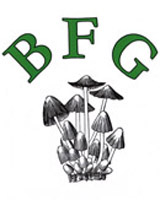N
|
|
 |
Naucoria scolecina (a species of Aldercap with no common name) 
May 19, 2021. In the Mire at Burnham Beeches Kerry Robinson found this unusual species in wet soil under Alder, later identified by Derek. The genus is a tricky one to identify, most species having a mycorrhizal relationship with Alder - a few with Willow. They are typical LBJs and very similar at first glance to Galerina and Conocybe as can be seen from Derek's photo. Our database has just two previous records, both from the Beeches 70 years ago made by Derek Reid - Head of Mycology at RBG Kew with a reputation second to none at the time, so Kerry is in good company!
|
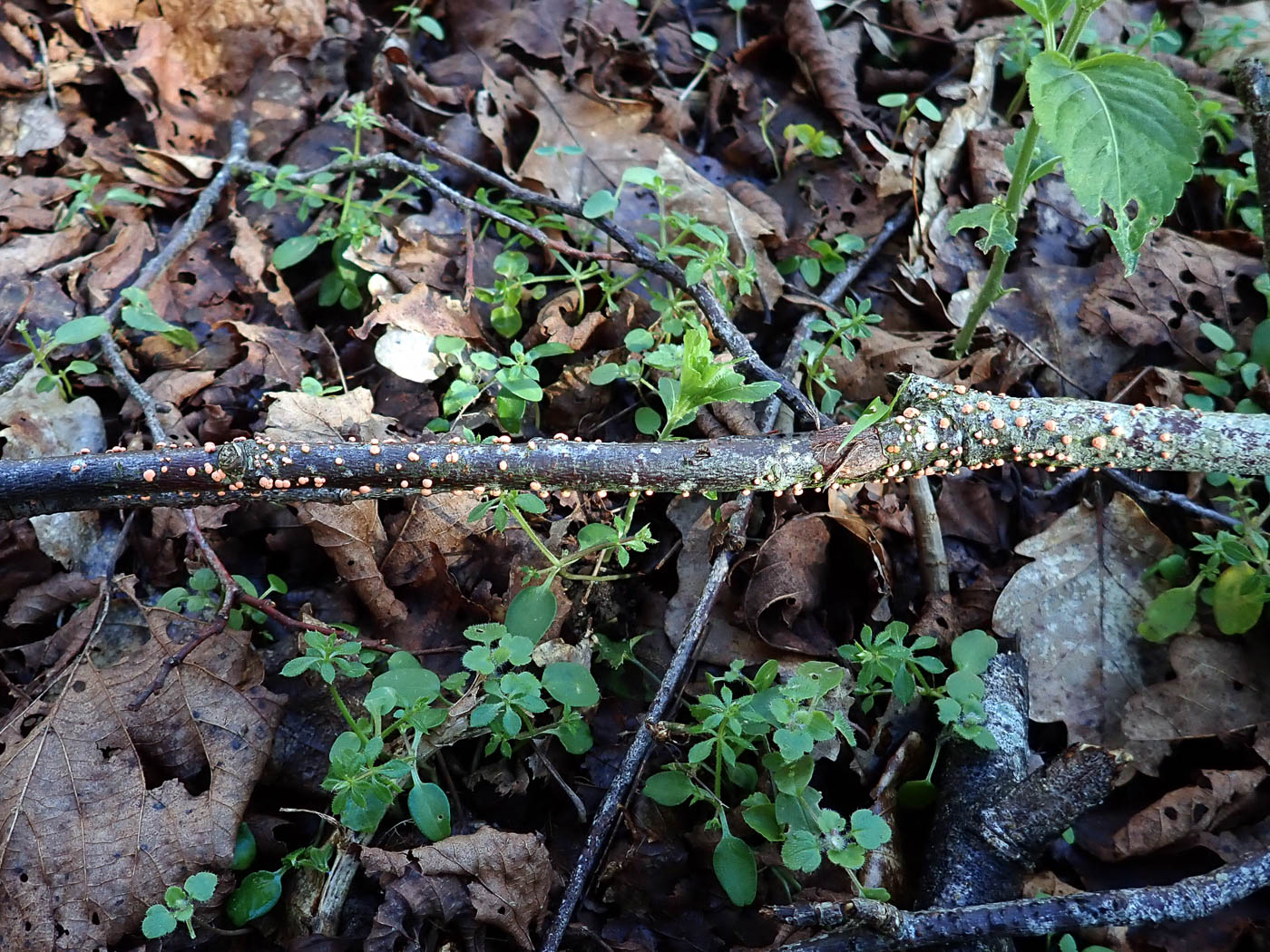
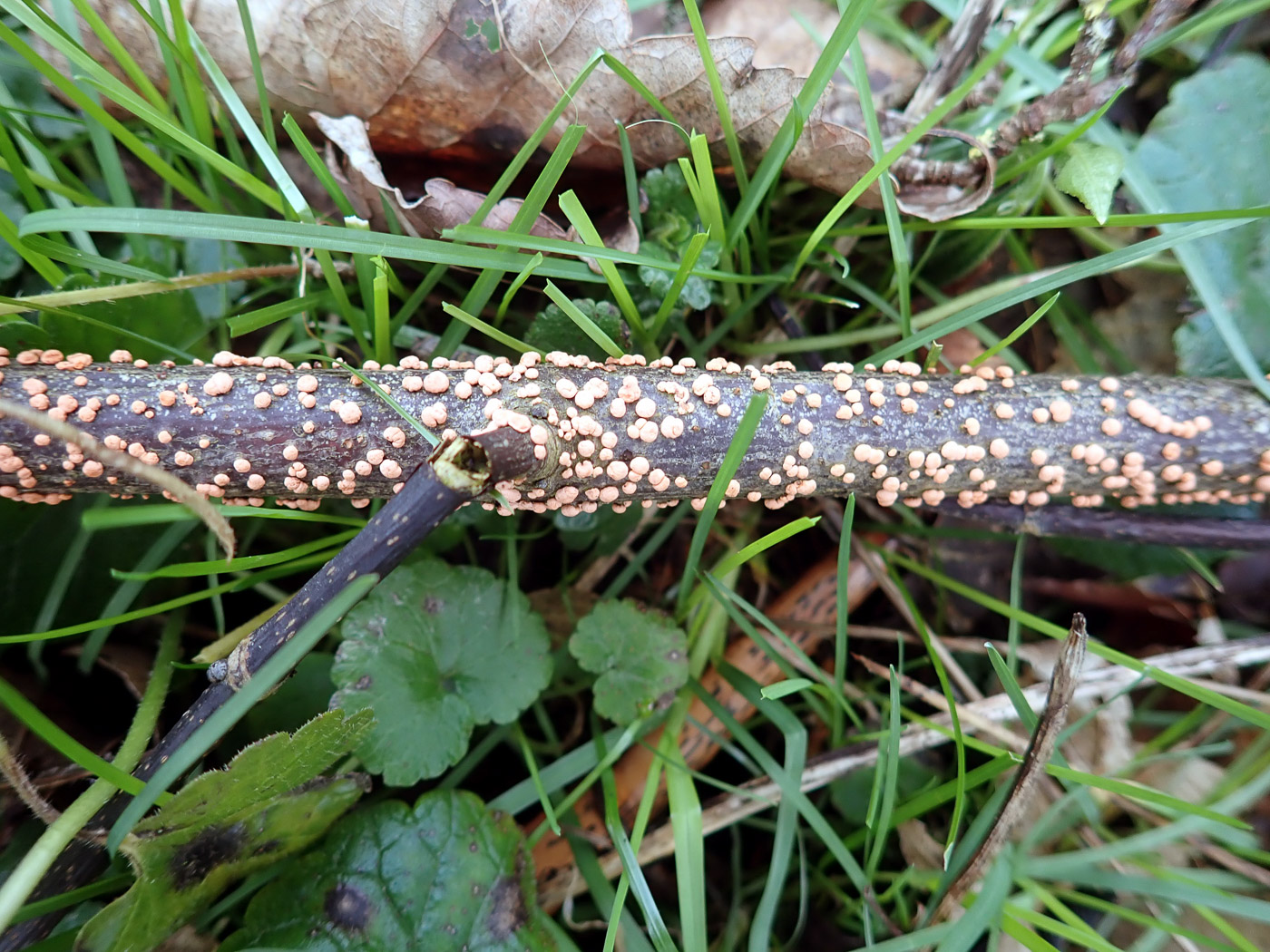
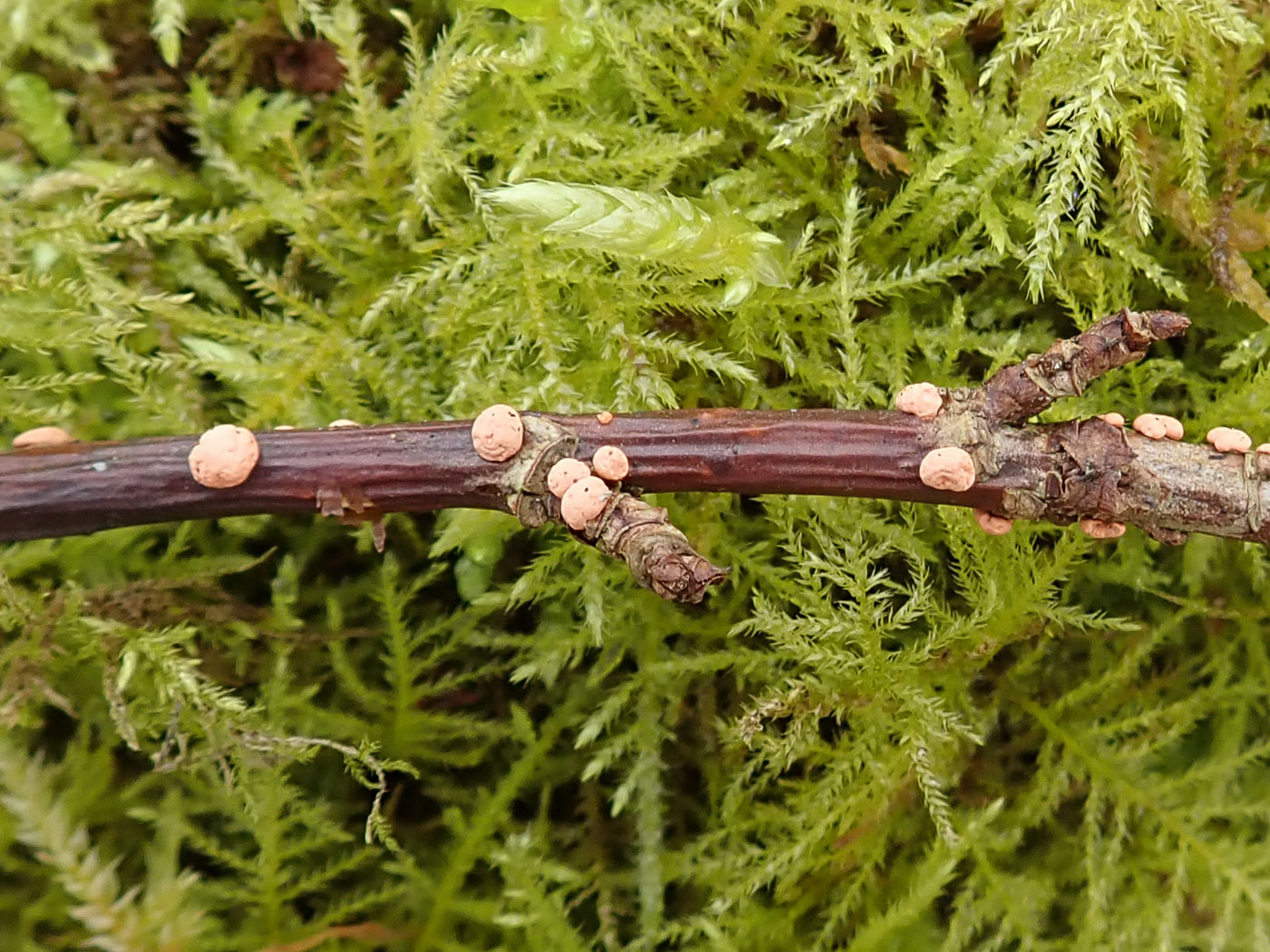
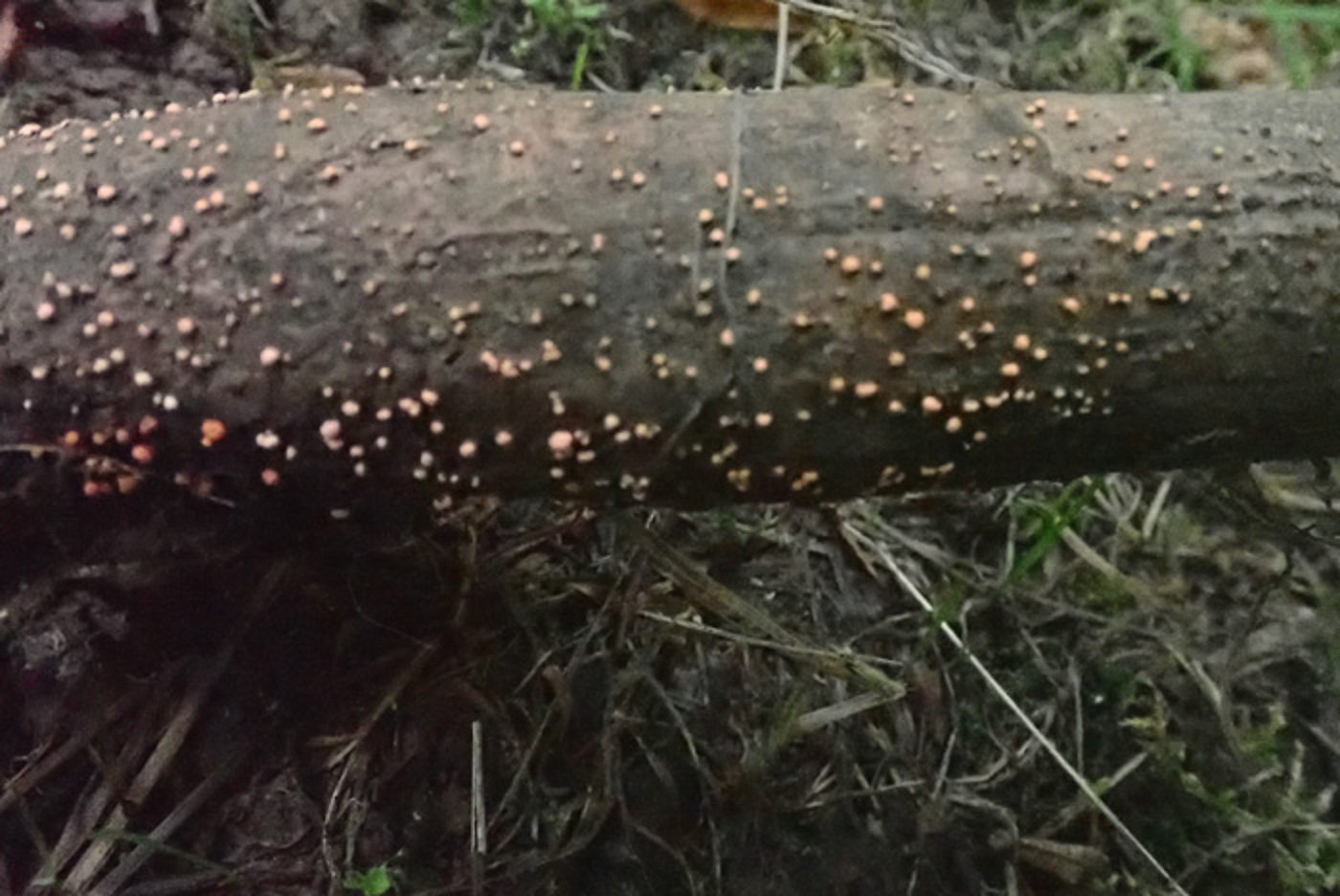
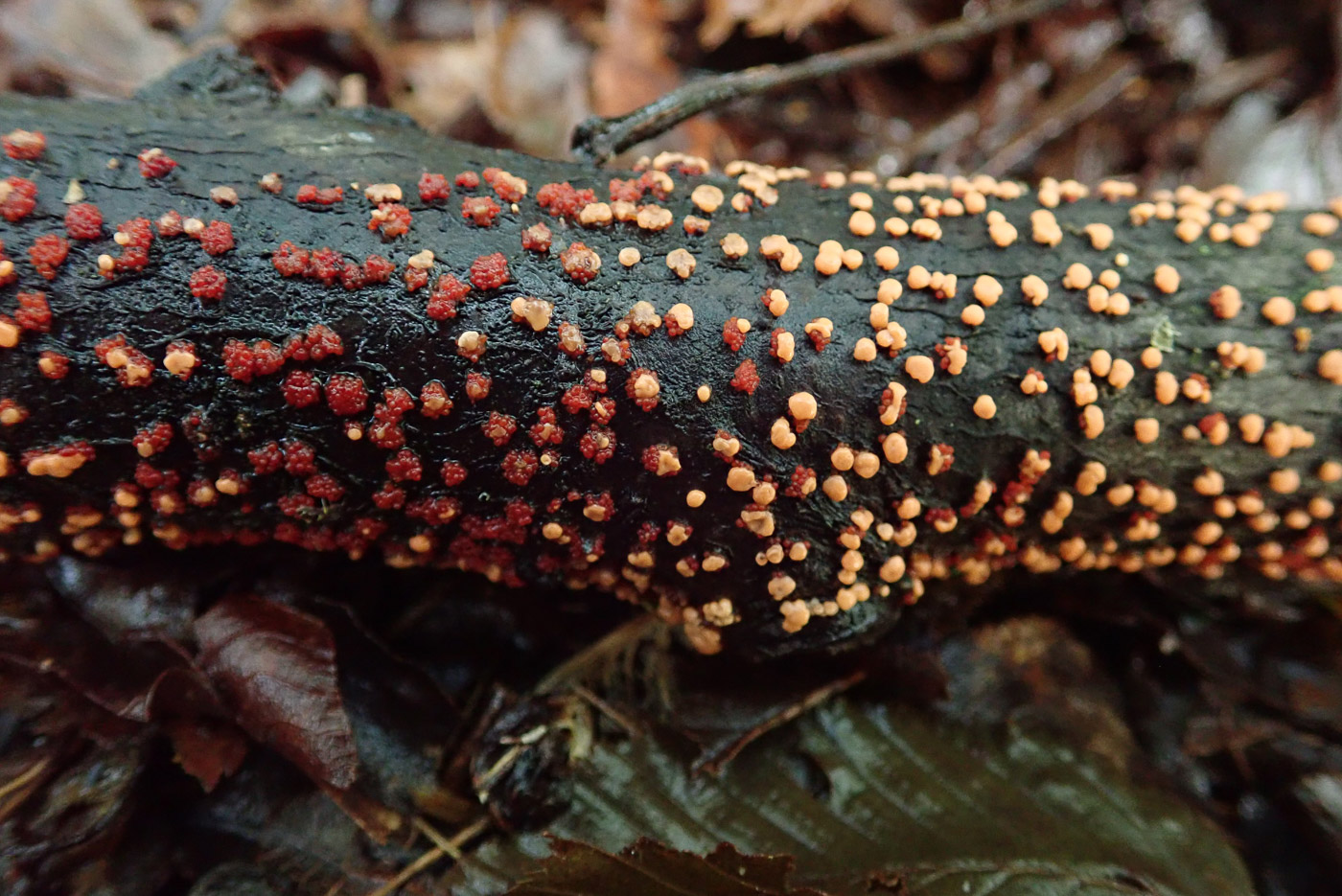
|
Nectria cinnabarina (Coral Spot)
Mar 3, 2024. At Turville Heath there was very little of fungal interest about, but amongst some woody remains Penny noticed this decidious stick with the bright orange spots of this distinctive and very common species.
Mar 19, 2023. In Turville Heath Penny found several patches of this common Ascomycete on piles of deciduous twigs, presumably stirred into action by the warmer damp conditions recently. We have two previous entries: 2022 September 7th, also 2020 October 8th, so this seems to be the first found in Springtime.
Sep 7, 2022. On a deciduous stick in Turville Heath Penny found this rash of orange spots easily recognisable as this common species. (Not my greatest photo, sorry!)
Oct 8, 2020. This is one of the easiest Ascomycetes to recognise, found by Penny Cullington at Turville Heath on various deciduous sticks. Seen here are two stages of development: first the pale smooth-topped conidia stage, followed by the final darker reddish stage which produces the spores. Each blob is less than 5mm across. Very common on wood piles and sticks, particularly on Beech and Sycamore.
|
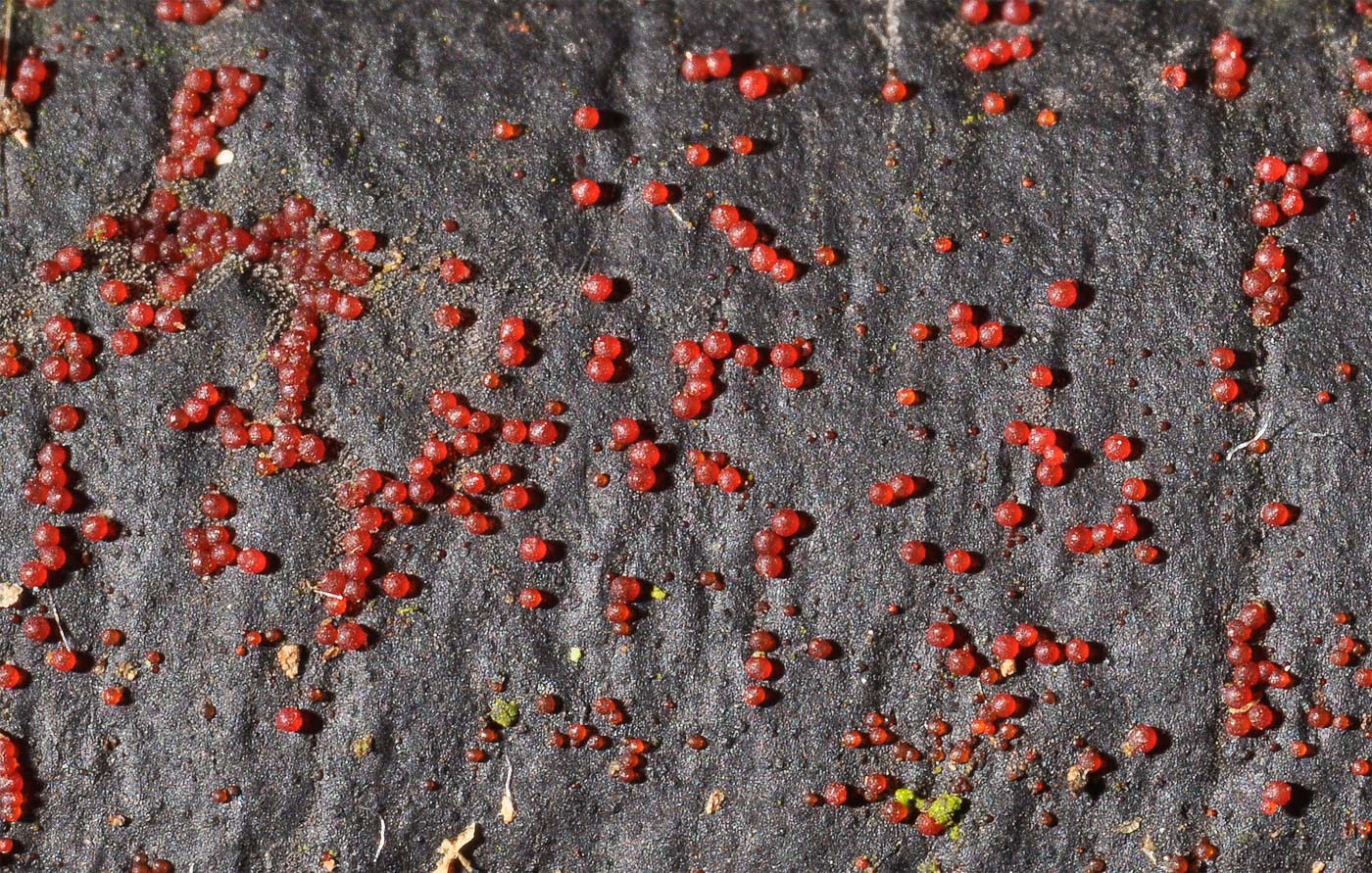 |
Nectria episphaeria (a species of Coral Spot with no common name)
Jun 9, 2021. In the Mire at Burnham Beeches Kerry Robinson noticed these tiny red specks on the common black Pyrenomycete Diatrype stigma. An example of a fungus growing on a fungus, this is a species often missed unless one knows to search for it on the host fungus - which can be one of several different crusty black Pyrenomycetes - because it is hard to see even with a handlens, being under 1 mm at most! The photo here is a library photo of Kerry's as this is a tricky species to get a decent image of in the field for obvious reasons.
|
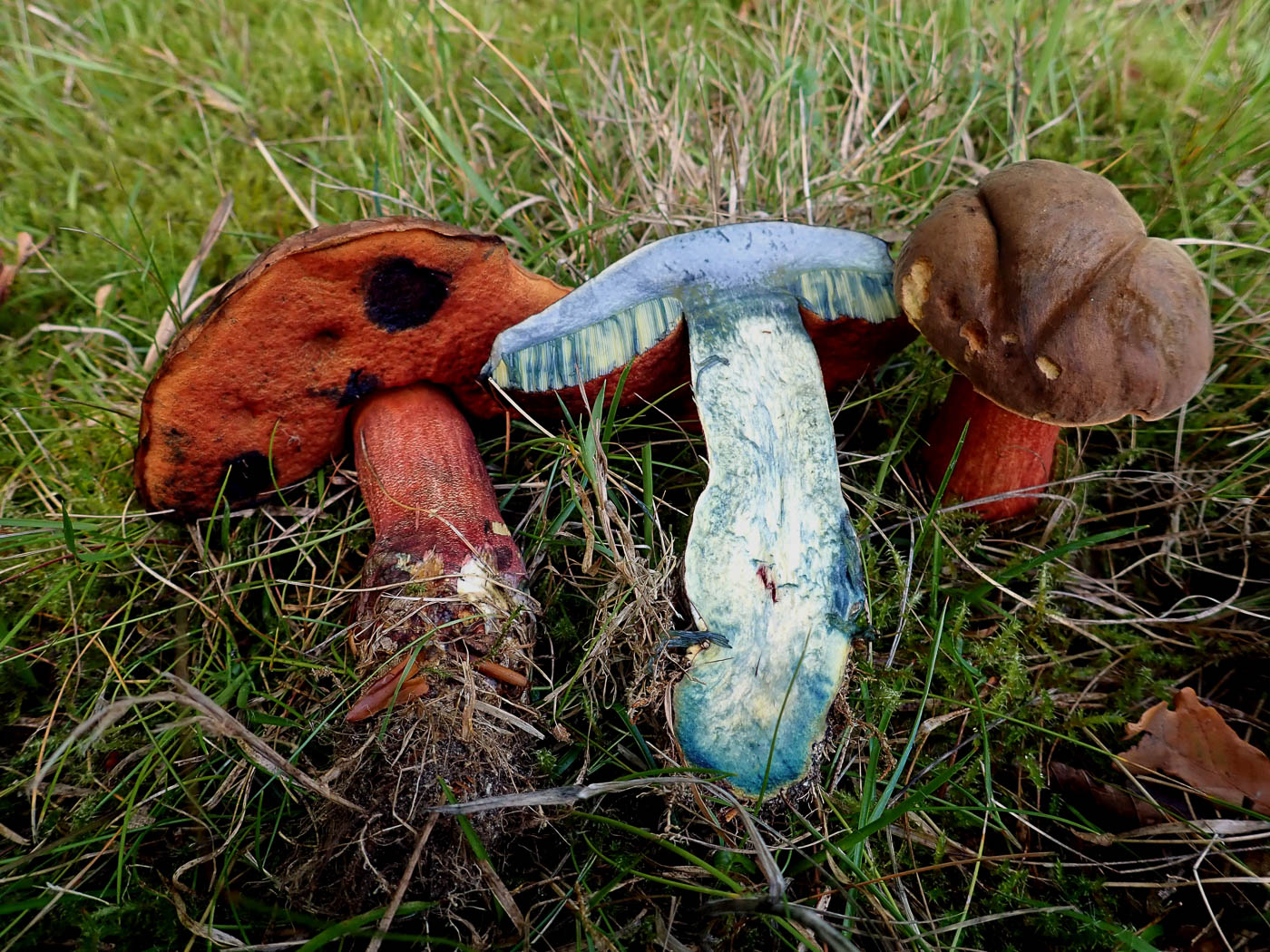
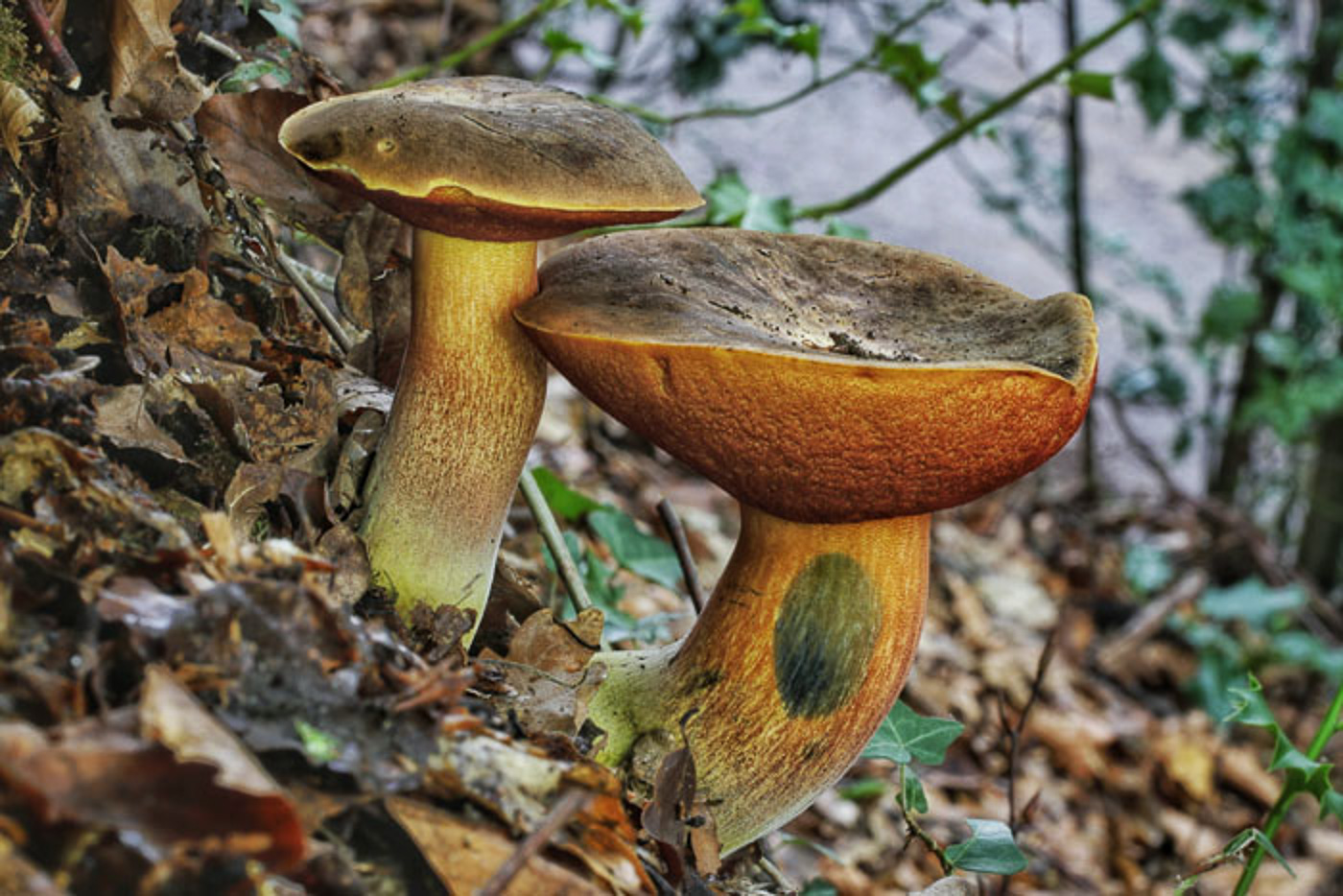
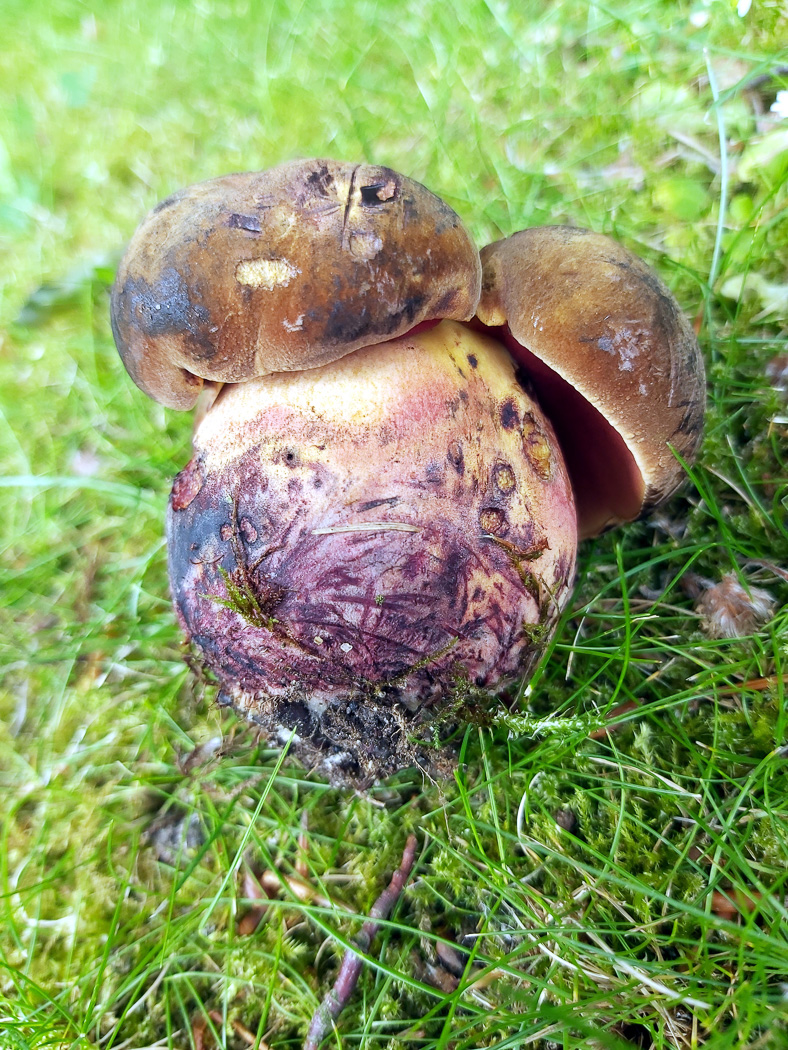
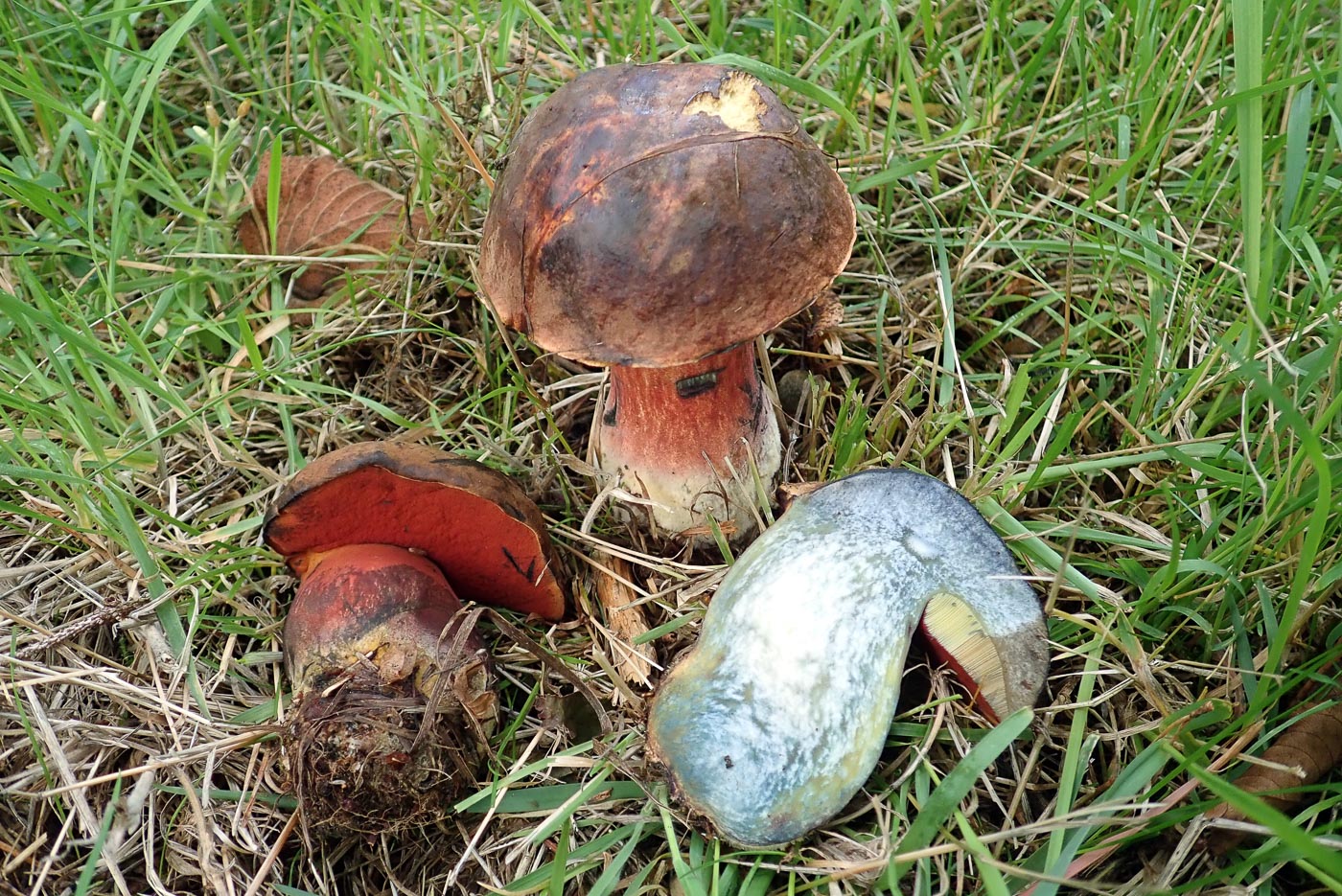 |
Neoboletus luridiformis (Scarletina Bolete)
Sep 24, 2022. Though we have an earlier image of this striking Bolete on Finds (September 12th) when Penny found these fresh specimens at Cadmore Ends under Oak she couldn't resist setting up this photo to show the impressive colour change when the flesh is exposed to air. Similar to both Suillellus luridus and S. queletii which also have orange red pores and blueing flesh, today's species has brighter red pores and a stronger blue reaction than either of them and is also by far the commonest of the three. We have images for comparison on Finds but some collections are very hard to identify and separate with certainty.
Sep 12, 2022. In Bow Brickhill Justin Long found this neatly positioned pair of boletes growing on a perilously steep slope (and requiring some dangerous acrobatics to get his photo!). The substantial size, brown cap, red pores and strongly bluing stem (with Justin's thumbprint) make the species instantly recognisable, but if in doubt, cutting one open reveals the yellow flesh instantly turning bright blue. See also Finds 2020 September 5th and 2021 June 24th, but just two days before Justin's find in Penny's report on our Ivinghoe Common Walk when the blue flesh is in evidence.
Jun 24, 2021. In his local patch around Jordans village Jesper Launder noticed this early fruiting of a distinctive species of Bolete. This is one that appears frequently on our early autumn lists and, like several other species, can often start popping up in summer if conditions are suitably moist and warm. It is notable for its robust shape and size, the combination of brown cap and red pores which blue remarkably strongly when pressed, as also does the flesh if one cuts into the stem, it is happy under a mix of different deciduous trees, particularly Beech and Oak. So one to be looking out for now.
Sep 5, 2020. More familiar as Boletus erythropus, this impressive fungus is quite common under deciduous trees (here found by Penny Cullington at Turville Heath growing under Lime), The brown cap, bright red pores and stem with flesh that instantly blues when cut make this an easy species to identify.
|


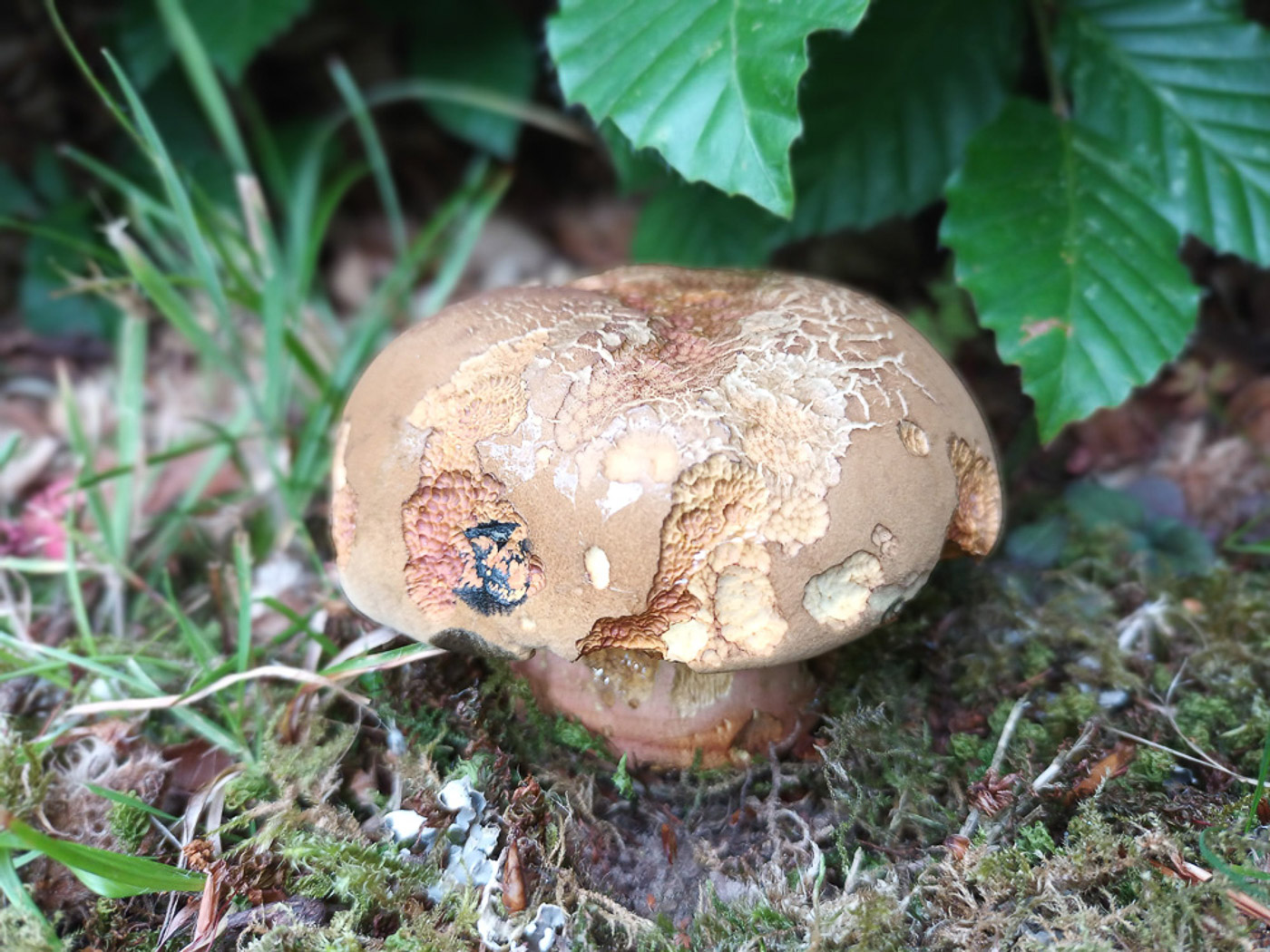
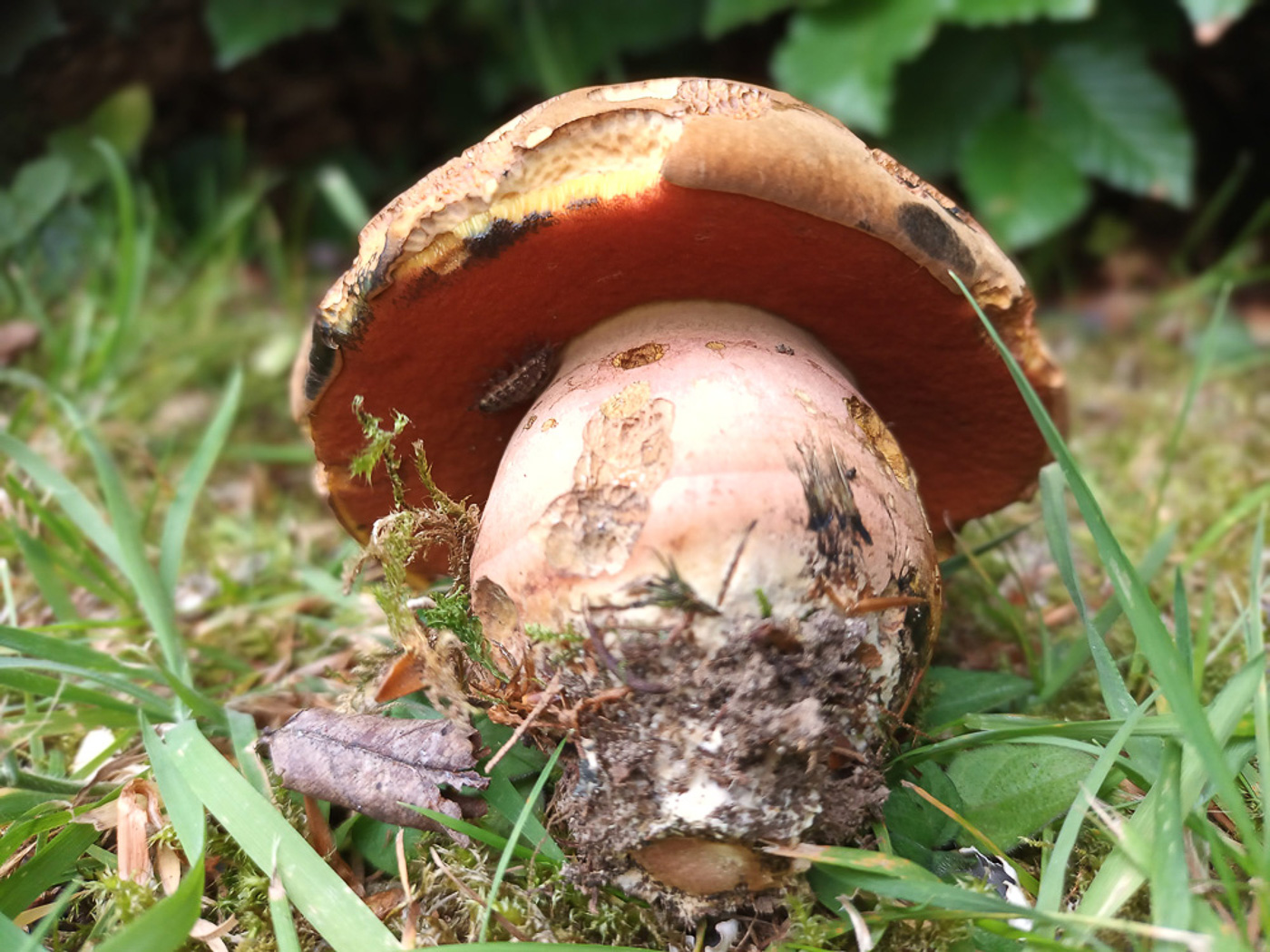 |
Neoboletus xanthopus (a rare Bolete with no common name) 
Jul 29, 2023. In Jordans village under Beech and Oak at the same spot where he'd previously found this infrequently recorded Bolete, Jesper Launder noticed it coming up again. Very similar to N. luridiformis (Scarletina Bolete) and in fact possibly just a paler form of that species, it has yellow tints in the cap and stem but shares with that species the lack of reticulation on the stem and negative reaction to Melzers which helps to separate both species from those in genus Suillellus which share a positive blue reaction. Jesper's collection last year (see Finds 2022 June 24th) failed when sequenced, so we hope for better luck with sequencing this time.
Jun 24, 2022. In Jordans village under Oak and Beech Jesper Launder found this very rare Bolete - new to the county and only recently confirmed as British. He's been finding it in this spot for several years and pondering over its identity which, however, has now been confirmed by Geoffrey Kibby and other European experts. This species, first described in 2014, is a sister species and very similar to the common Neoboletus luridiformis - previously B. erythropus and known to be a species complex, and is possibly the same as what was known as B. erythropus var. discolor (hence the ? after it's common English name above). It shares the strongly blueing flesh and red pores with its commoner sister species but has a paler yellowish stem which lacks the distinct reticulation, also the pores tend to turn yellow at the cap edge. The collection will be sequenced and is an important find though possibly may be less rare than thought due to it being easily mistaken for N. luridiformis.
|

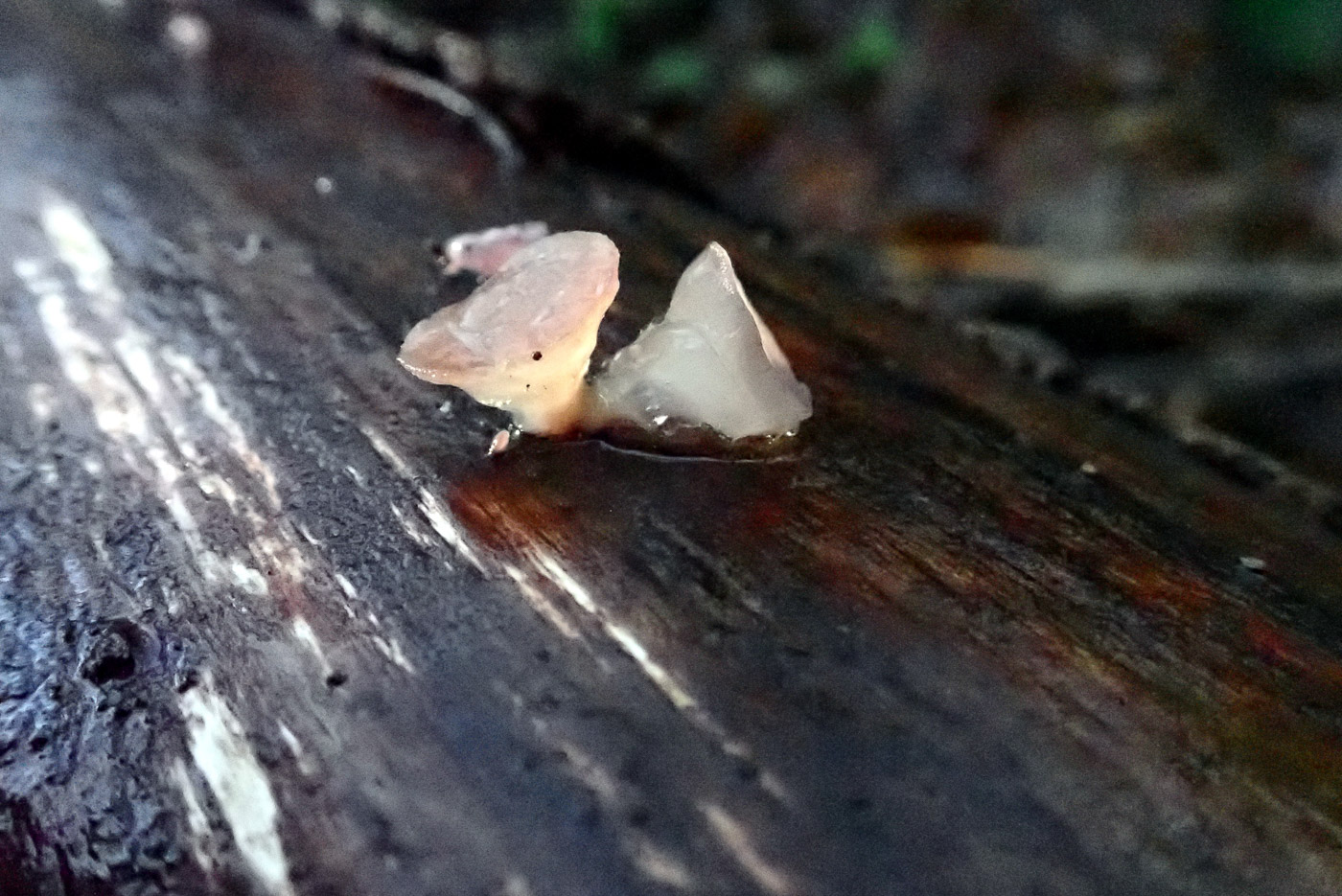
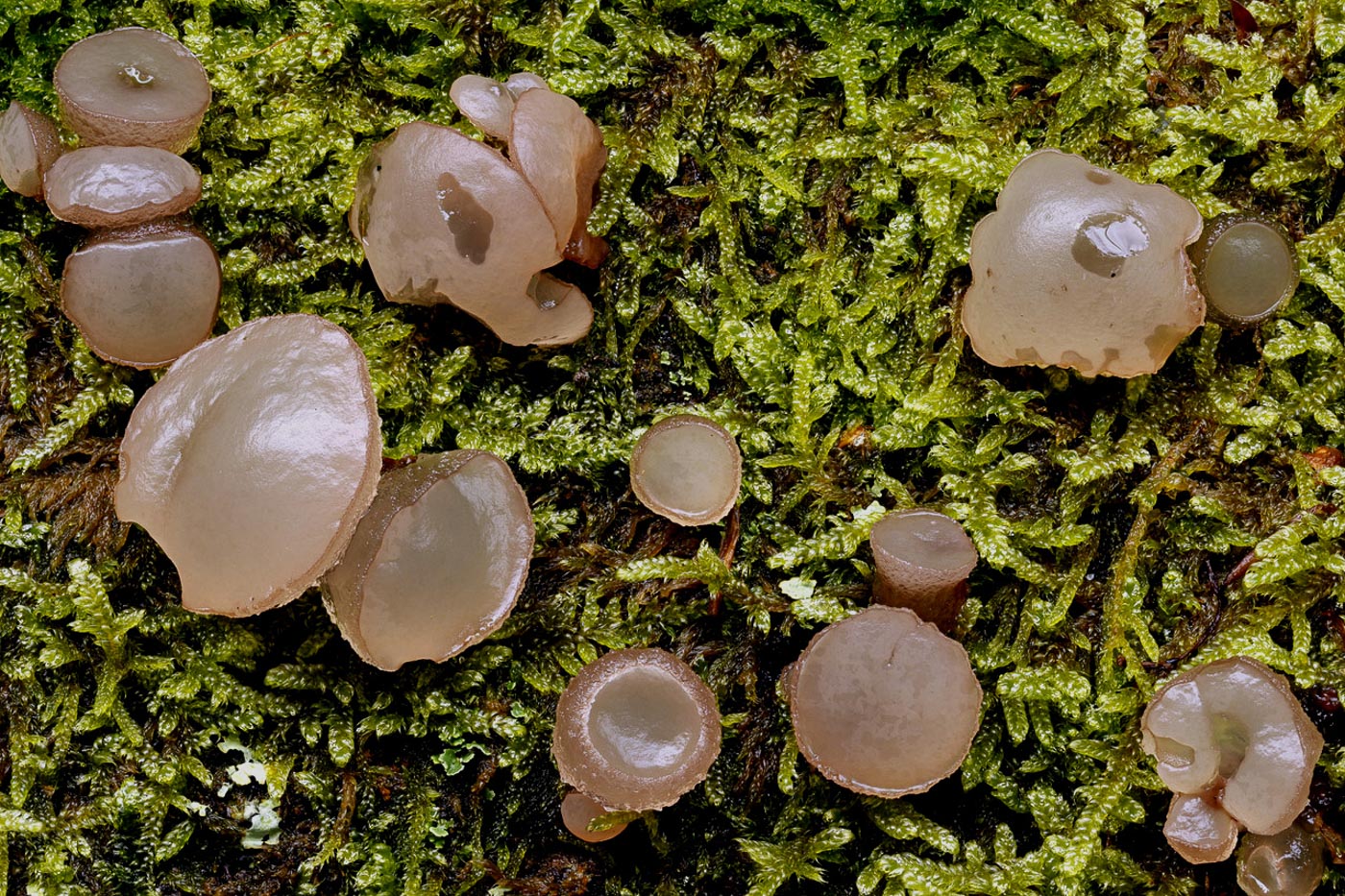
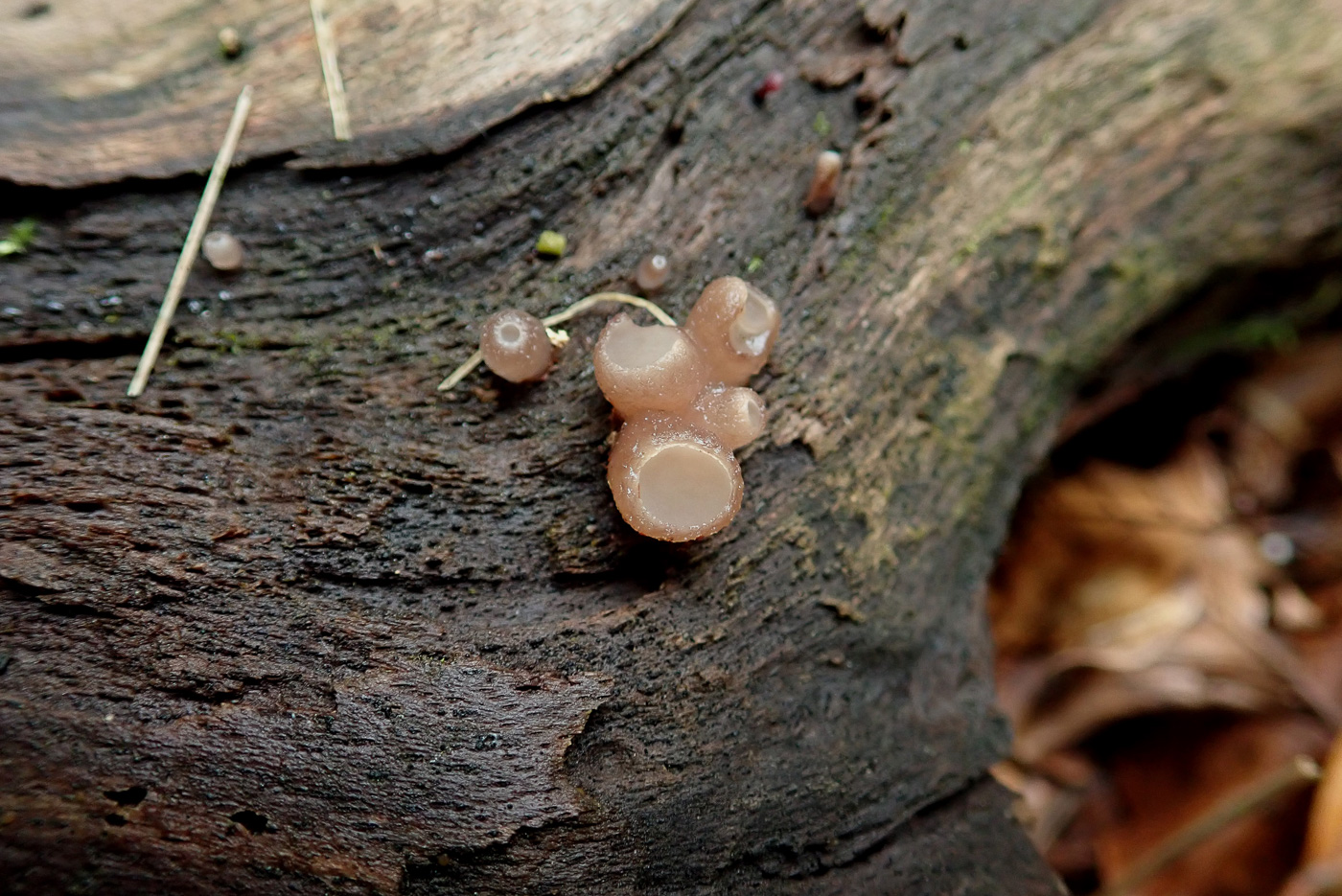
|
Neobulgaria pura (Beech Jellydisc)
On a fallen Beech trunk in Burnham Beeches Penny found some still slightly frosted but easily recognisable specimens of this common gelatinous ascomycete.
Jan 17, 2022. On a fallen Beech trunk in Burnham Beeches Penny found some still slightly frosted but easily recognisable specimens of this common gelatinous ascomycete.
Aug 23, 2021. In Naphill Common on a fallen Beech trunk Peter Davis found this Ascomycete just developing. It likes to grow on the bark (only on Beech) and can get to about 5 cm across when mature and more cuplike but here was under 1 cm across. It has a soft gelatinous granular texture, always being much paler than the quite similar Ascocoryne sarcoides - also in Beech bark and gelatinous but considerably smaller.
Oct 10, 2020. This Ascomycete is usually very common on fallen Beech but seems to have only just started fruiting, found here by Paul Goby in Naphill Common (photo 1)and a couple of days later by Penny Cullington in Gussetts Wood (photo 2). Possibly confusable with Ascocoryne sarcoides (see photo dated Oct 06) and often found on the same Beech trunks, today's species is both paler and larger than the Ascocoryne and form more obvious clustered discs which can get to around 4 cm across.
|
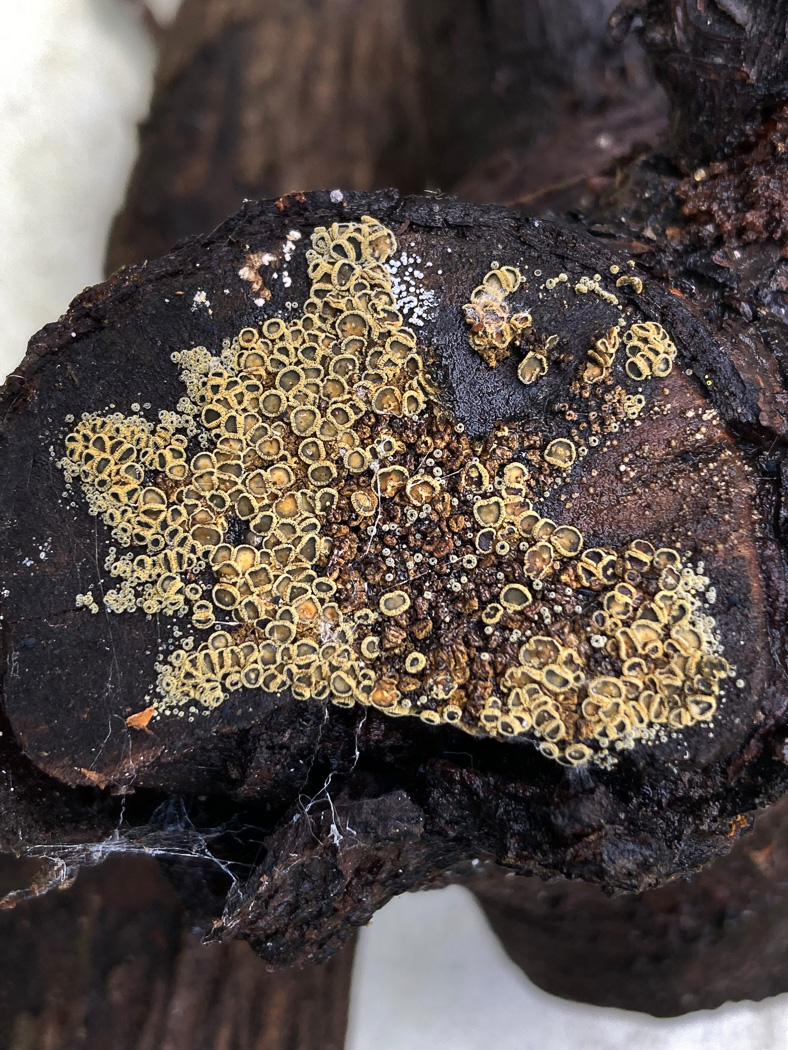
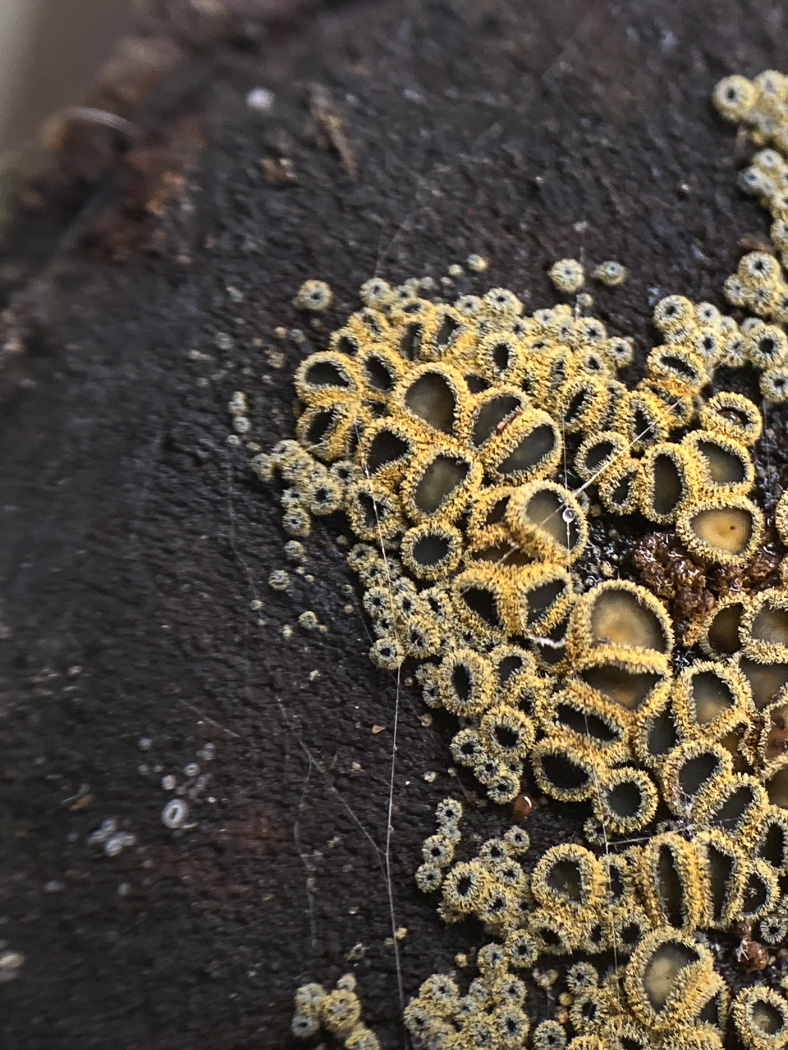
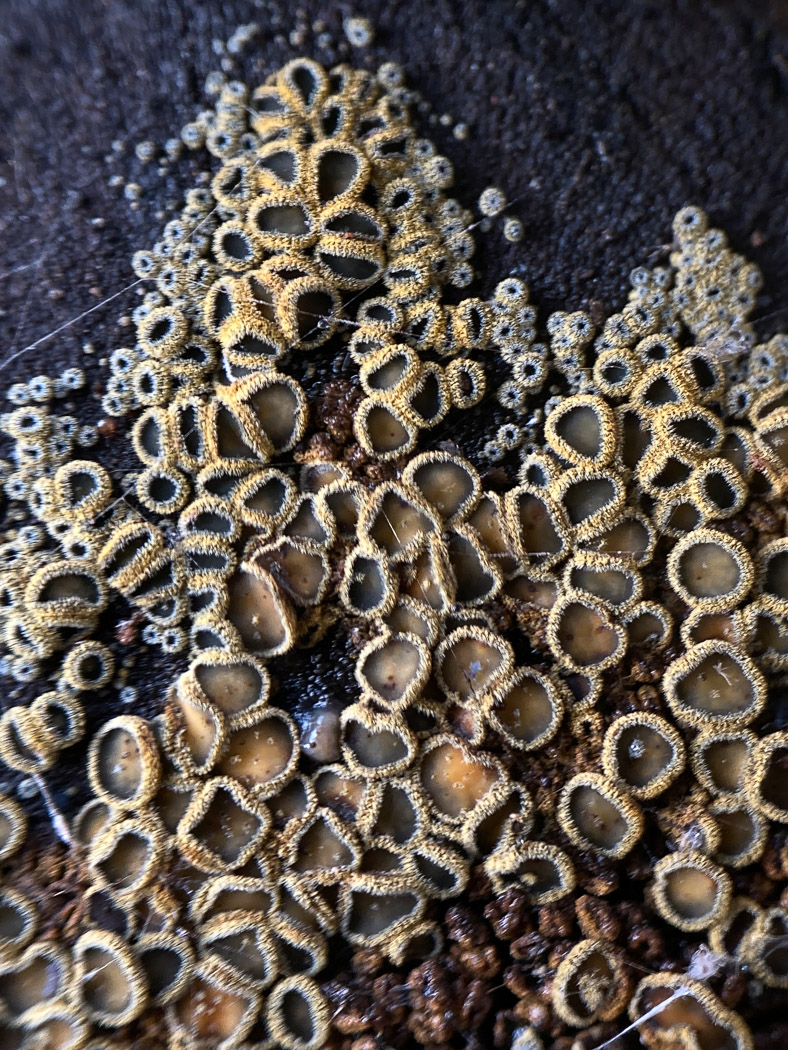
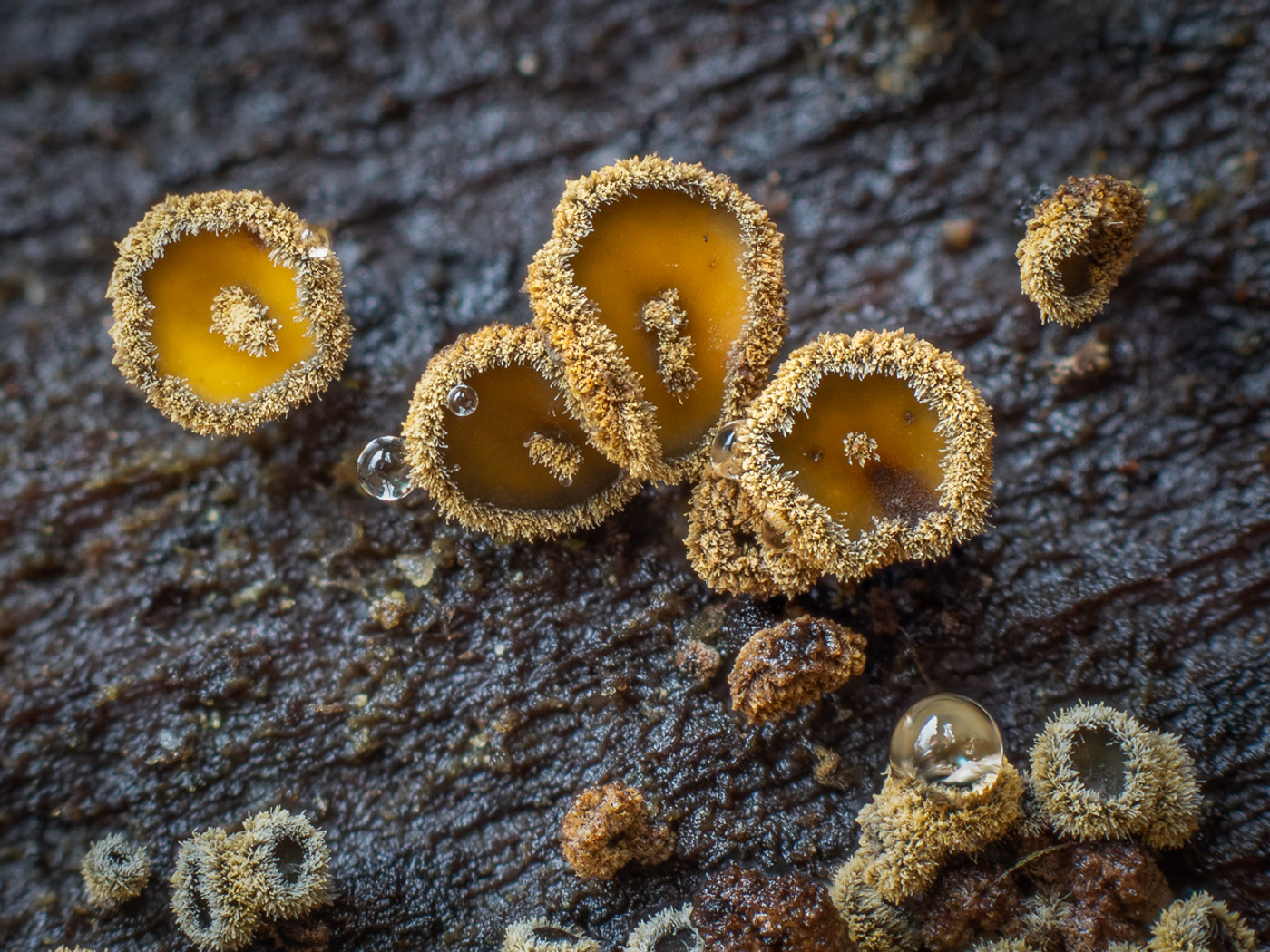 |
Neodasyscypha cerina (an Ascomycete with no common name) 
Dec 2, 2022. In his garden in Cippenham Russell Ness has been watching the development of this swarm of interesting little cup fungi on the cut end of a log in a wood pile, which he identified using Ellis & Ellis. As cup fungi go, this is certainly a striking and individual species with its almost Mollisia-like centre but having a distinctly frilly edge. Previously in genus Dasyscyphus, this is our second county record though the species appears to be not that uncommon. See Finds 2021 Jan 12th for Barry Webb's image when he suggested it should be named 'Lemon Tarts' - very apt!
Jan 12, 2021. Barry Webb found these tiny little stalkless cups on fallen Beech in Burnham Beeches. The identification has been made simply from their appearance in the photograph where the distinctive bright yellow centres and contrasting hairy outer surface seem diagnostic, also though we have no other county record of this species it is apparently quite common on Beech. Barry suggested the common name Lemon Tarts!
|
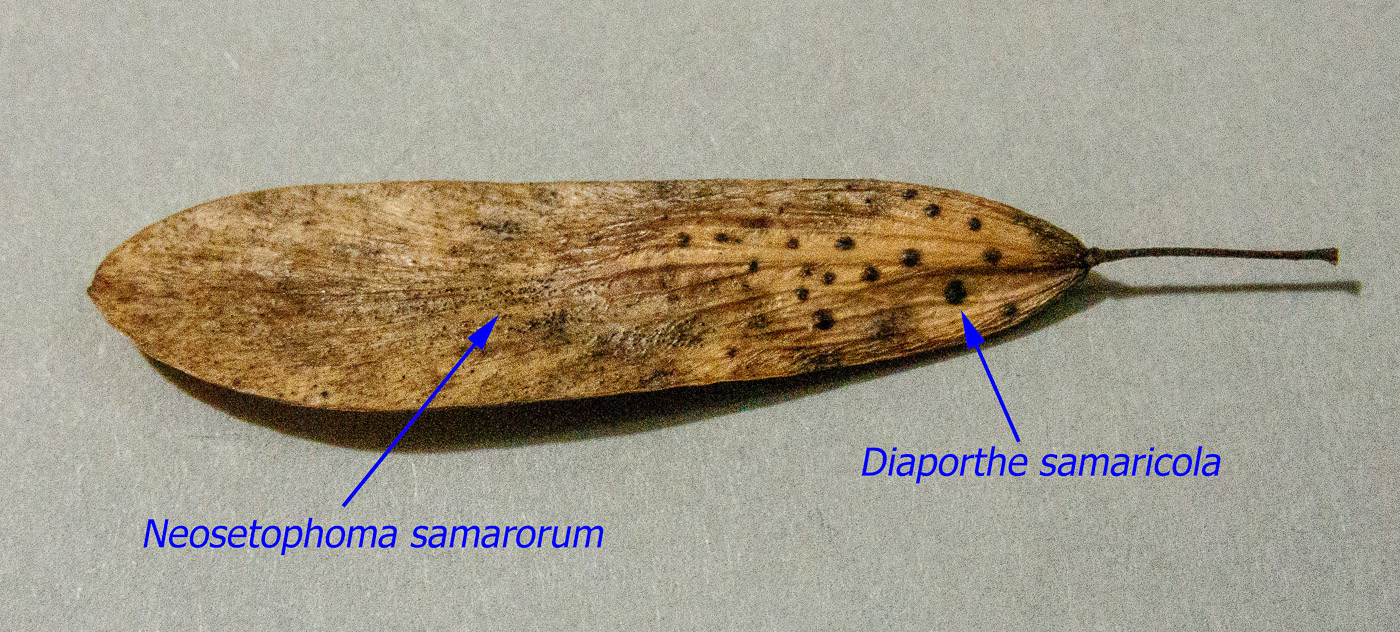 |
Diaporthesamaricola and Neosetophoma samarorum (two ascomycetes with no common name)
Feb 5, 2021. Two species for the price of one: Neil Fletcher read on Facebook about these two tiny species to be found on the samara (keys or wings which aid spore dispersal) of Ash in Spring and promptly went out to see if he could find them. The first keys he picked up in the Walter's Ash allotments showed both species together and he found they were present on many of the keys he examined. Though apparently both are common on fallen keys at this time, we have no previous records on our database so both appear to be new to the county. It is likely that anyone developing an interest in such fungi will be richly rewarded with new species for the county because so few people specialise in them and there are probably thousand of such species waiting to be discovered and recorded here for the first time!
|
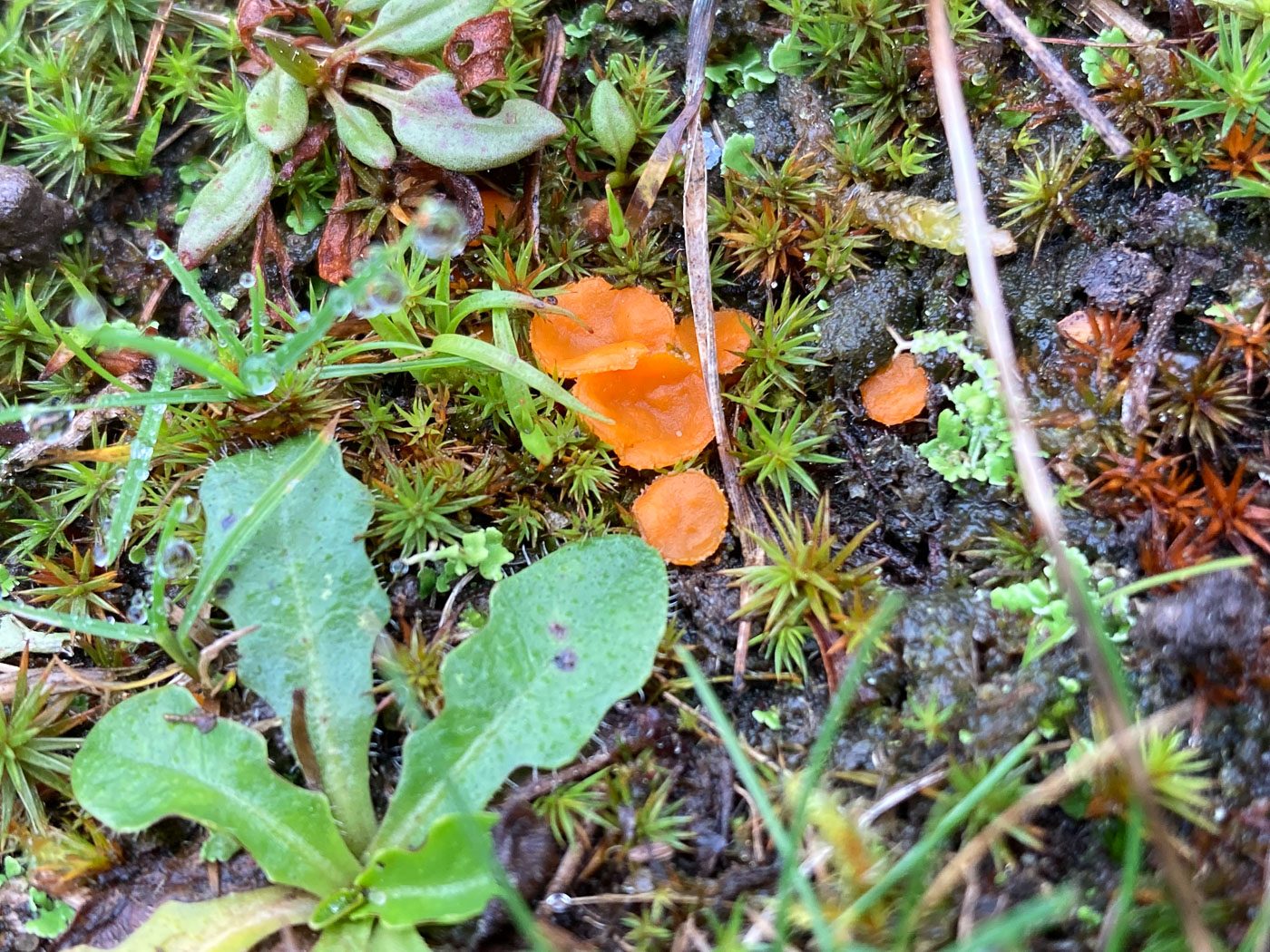
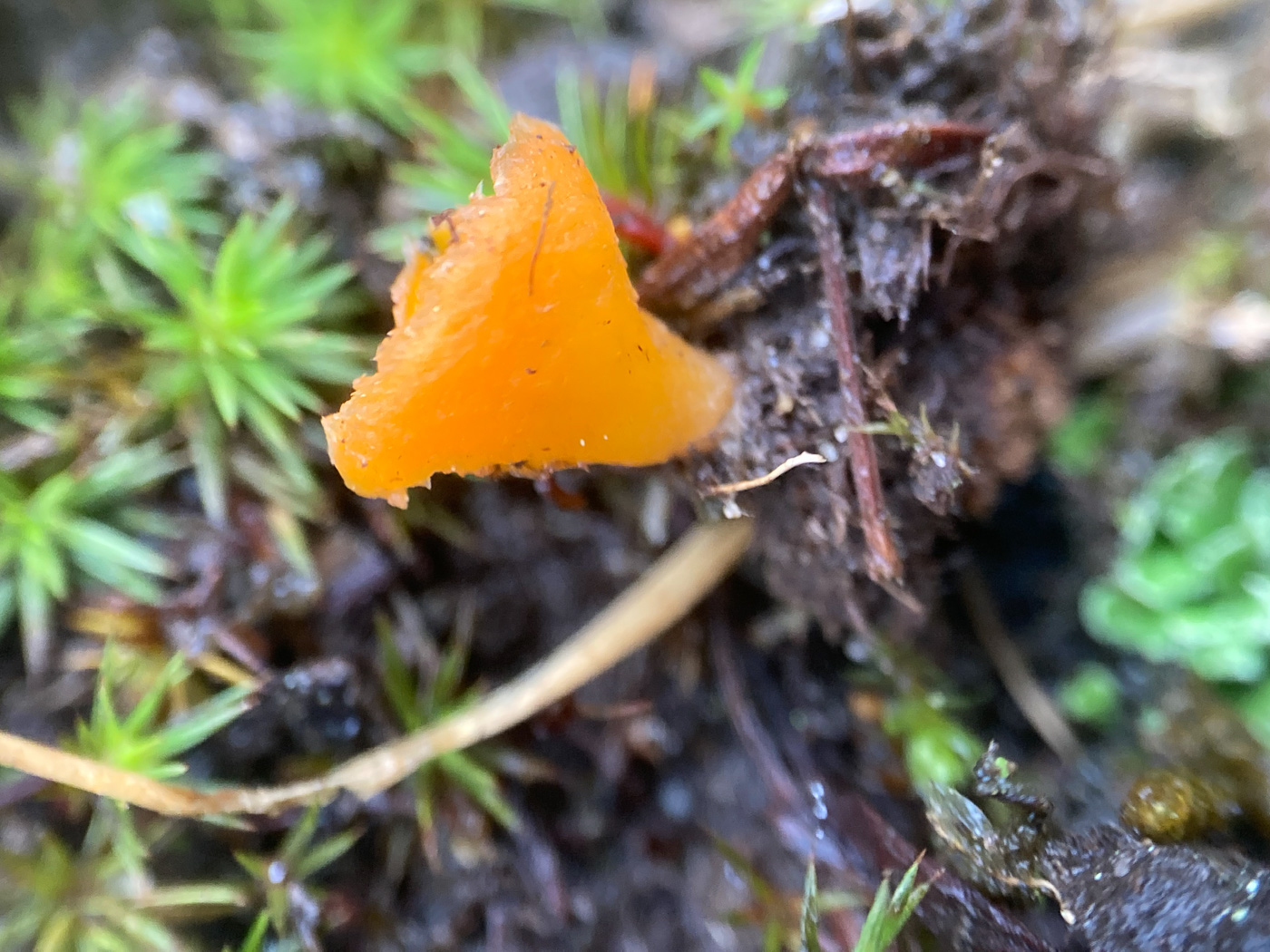 |
Neottiella rutilans (an Ascomycete with no common name) 
Dec 3, 2021. In Cliveden Estate Russell Ness, who knows his mosses, found this rare and brightly coloured discomycete species growing amongst Polytrichium juniperum in a patch of acid soil. The species only occurs with this particular moss and patches of acid soil are not common in the county, hence the fungus has not previously been recorded here. This was a nice find.
|

